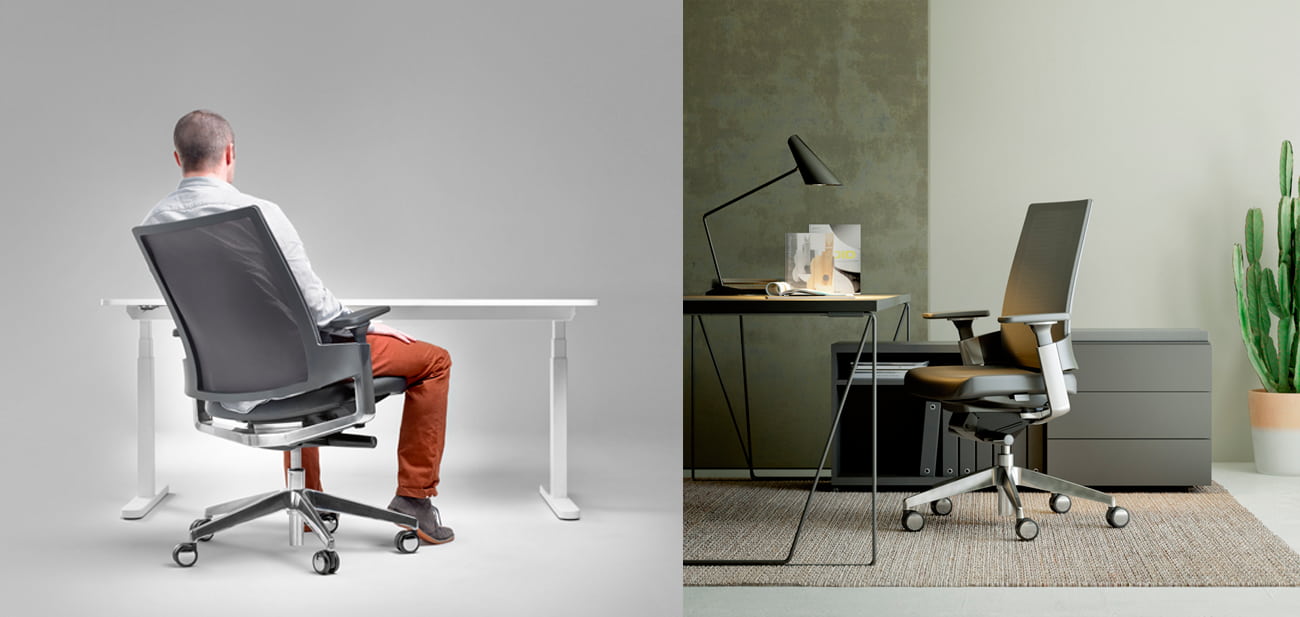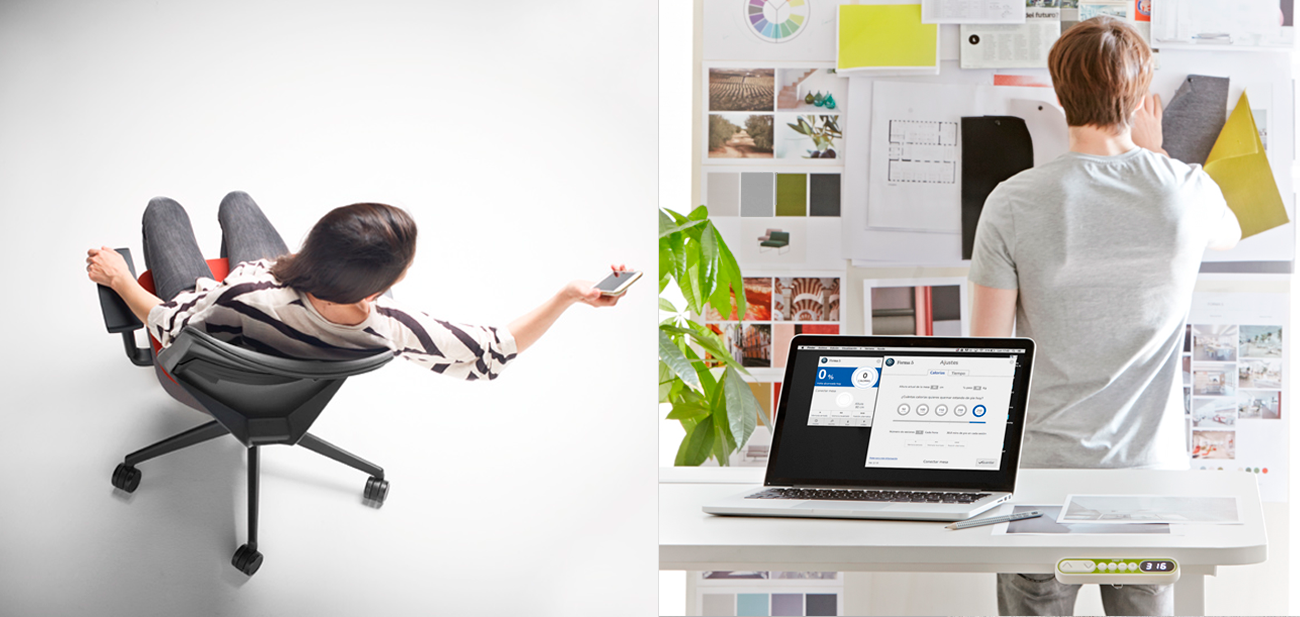
Postural problems can be increased due to the use of inappropriate furniture whilst teleworking
The current Covid-19 pandemic has brought about great social change that we have had a hard time adapting to but will surely remain with us moving forward. Social distancing and hygiene have been the main method of prevention, the use of PPE’s and telework also.
With the imposition of virus prevention and containment measures by governments, almost all countries have recommended the promotion of telework for those jobs or tasks that are compatible with it.
Before the virus, only a few companies allowed their employees to telework, but now that it has been proven that it is technologically possible and that it has many benefits for concentration and conciliation, experts agree that this way of working is here to stay.
But are our houses ready to telework? Very few can afford to isolate a room to set up an office, however, it is highly recommended to think and plan a work area at home to carry out our tasks. It is important, above all, to choose comfortable and healthy furniture since we are going to use it for many hours and we must not allow telework to be detrimental to our health. Postural pain is the main cause of absenteeism in the office and it seems that these discomforts can increase in times of teleworking since we often use domestic furniture that is not designed to be used for many hours sitting at a computer. Forma 5 is a specialist in work furniture and we recommend the following.

For the furniture to work we must allow the user to move naturally and adapt to their physicality
What requirements should we demand of a work chair? That allows freedom of movement and adapts optimally for the physical wellbeing of the user.
–The seat must have wide dimensions that allow movements and posture changes. It is of vital importance that it can be adjusted in height to avoid pressure on the back of the thighs. Adjustable seat depth can also be beneficial.
–The seat pad should not be too soft. A foam that has too much ‘give’ can, at first use, give a false sense of comfort but actually it would be detrimental since it hinders freedom of movement.
-The dimensions of the backrest must be such that they provide support to the entire back, with special emphasis on the lower back. It is recommended to choose a chair that allows you to regulate the pressure in this area, (see here if you want to know more about the types of lumbar regulation and its benefits)
-Backrest and seat inclination regulation. Many times we think that adjusting the height of the seat is enough, but to avoid back damage, it is very important that the chair has a mechanism for adjusting the seat and backrest inclination and it is preferable, according to the INSS, that both movements are independent of each other. There are many types on the market, from the simplest to proactive mechanisms that force the user to carry out micro-movements obtaining a notable improvement in their health. (click here for more information on mechanisms).
-It is highly recommended to choose a chair with armrests and much better if they are adjustable.
-The chair must be on a five-star wheeled base so that stability is optimal.
-A chair with headrest allows the vertebrae in the dorsal area to rest.
-The choice of upholstery is not merely aesthetic. It is preferable to look for breathable upholstery that ensures thermal comfort. For a telework chair, it must also be taken into account that certain upholsteries such as leather or nappel are easier to clean and disinfect. The mesh backrests, if properly tensioned, provide guaranteed breathability and thermal regulation.
And how should our table be?
The surface of the table must be as wide as possible to allow sufficient space for items needed on a daily basis. The depth should allow the computer screen to be at least 55 cm from the eyes. To meet both requirements, ergonomists recommend that the table must measure at least 120 x 60 cm.
–The table surface must not be reflective and light finishes are preferred. Nor should it transmit any thermal sensation. Finally, it is recommended that the top does not have sharp corners or edges.
–The ideal height of the table depends a lot on the height of the user, for most users a table between 68 and 76 cm is correct. There are some tables on the market that allow height adjustment, and there are even some that allow you to alternate between standing and sitting at work, providing health benefits.
-The surface under the table must allow freedom of movement and be at least 60 cm deep and 70 cm wide.
-The table must contain elements that allow the wiring of the computer, telephone, etc.
-Stability must be guaranteed.
Finally, to make our station more efficient, it is also important to find the right place at home, paying special attention to lighting and temperature. Organization and order also help increase concentration and effectiveness.
